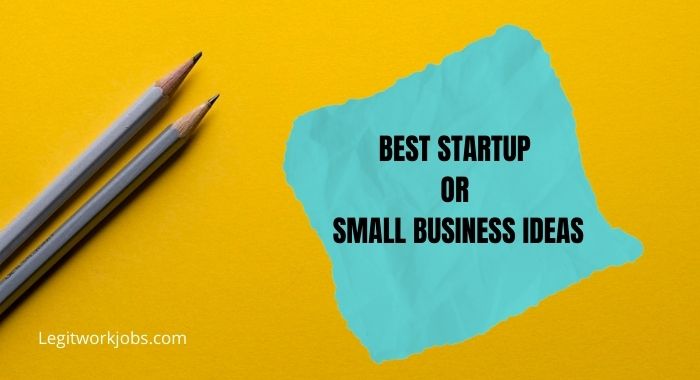Blog
A Guide to Spotting and Understanding Deepfake Videos
Deepfake videos are fake videos made with computer help. They use fancy technology to make it look like people are doing or saying things they never actually did.
These videos can be used for fun or to trick people, so it’s important to know how to tell if a video is a deepfake.
How are deepfake videos created?
Deepfake videos are created using AI and machine learning (ML) technologies and tools, such as:
Overview of deepfake technology:
Deepfake technology is a smart way to make fake pictures and videos using a type of artificial intelligence called deep learning. Deep learning is like a smart computer program that can learn and create things by analyzing data. The name “deepfake” comes from combining “deep learning” and “fake” because it uses deep learning to create fake content that looks real.
Tools and techniques used in creating deepfake videos:
The tools and techniques for making deepfake videos involve special computer programs and methods that use AI. Some of these include:
- Computer Vision: This helps the computer understand and manipulate visual information, like recognizing faces or objects in images and videos.
- Speech Recognition: This allows the computer to understand and work with spoken words in audio.
- Speech Synthesis: This enables the computer to create realistic-sounding speech.
- Generative Adversarial Networks (GANs): These are a type of smart network that consists of two parts – a generator and a discriminator. They work together to learn from each other and create or change images, videos, or audio. For example, they can modify the style, color, or content of what they’re working on.
Popular platforms for sharing deepfake content:
People often share deepfake content on popular online platforms like YouTube, TikTok, and Snapchat. These platforms have special tools and features that let users create and use deepfake content for different purposes. Whether it’s for entertainment, education, or communication, these platforms allow users to make and share deepfake videos featuring celebrities, politicians, friends, or expressing opinions, emotions, or experiences.
What are the common indicators of deepfake videos?
The common indicators of deepfake videos are the signs and clues that can help users to identify and recognize deepfake videos, such as:
Visual artifacts and inconsistencies:
Visual artifacts and inconsistencies are mistakes or problems that can show up in images or videos. These issues, like blurring, pixelation, or distortion, can suggest that the images or videos are fake and not genuine. These errors happen because the AI technologies and tools, such as computer vision and GANs, used to create or change the images or videos might have limitations or imperfections. This could be due to things like using low-quality data, not-so-perfect algorithms or models, or not enough training and testing of the AI system.
Unnatural facial expressions and movements:
Unnatural facial expressions and movements refer to faces or bodies in images or videos that look strange, such as awkward smiles, frowns, or winks. These abnormalities can suggest that the images or videos are fake. These oddities occur because AI technologies and tools, like computer vision and GANs, face challenges in capturing and reproducing the intricate details, nuances, and dynamics of faces or bodies.
This includes aspects like shape, size, color, and expressions. The technology might struggle to create truly realistic faces or bodies with authentic emotions, moods, or reactions, leading to unnatural or out-of-place features in the content.
Inconsistencies in audio and lip syncing:
When the talking in a video doesn’t match the movement of the lips, like if the words are late or don’t fit, it can mean the video is not real. This happens because the technology trying to make or change the video, using things like recognizing speech and creating new speech, can have a hard time getting everything just right.
So, if you notice the talking and lip movements don’t line up well, it might be a sign that something is off in the video.
Anomalies in lighting and shadows:
Problems with the lighting and shadows in images or videos, like things not looking quite right or being inconsistent, can suggest that the images or videos are fake. This happens because the technology (like computer vision and GANs) used to create or change the images struggles to accurately capture and reproduce how light and shadows work in real life.
It may have difficulty with details like brightness, contrast, and direction. Also, when trying to create new and realistic lighting and shadows, like changing the time, weather, or location in images or videos, it can encounter challenges and result in anomalies that give away the artificial nature of the content.
What are the tools and resources for spotting deepfake videos?
The tools and resources for spotting deepfake videos are the software and services that can help users to identify and recognize deepfake videos, such as:
Deepfake detection software and apps:
Deepfake detection software and apps are tools that can figure out if a video is a deepfake. They use smart technologies like machine learning, deep learning, and neural networks, which are kind of like computer brains that learn from data.
Examples of these tools include Microsoft Video Authenticator, which looks at videos and gives a confidence score to show how likely it is that the video was messed with, and Sensity, an app that checks videos and gives a report telling you where it came from and how much it has been changed.
Online platforms providing deepfake recognition services:
Websites and platforms offering deepfake recognition services are places on the internet that can help spot deepfake videos. They use smart technologies like machine learning, deep learning, and neural networks, which are kind of like computer brains that learn from data.
For instance, Deepware is a website that checks videos and gives a score to show how likely it is to be a deepfake. Another example is Reality Defender, a platform that verifies videos and provides a certificate to confirm if the video is real or not.
Tips for manual identification by users:
Tips for manual identification by users are helpful suggestions to help people spot deepfake videos using their own judgment. Some tips include:
- Visual Clues: Look for strange things in the video, like blurriness or odd shapes, that suggest it might not be real.
- Facial Expressions: Check if the faces or movements seem weird or unnatural, like awkward smiles or strange gestures.
- Audio and Lip Syncing: Pay attention to whether the words match the lip movements and if the audio sounds right; if not, it might be a clue.
- Lighting and Shadows: Notice if the lighting and shadows in the video look odd or inconsistent.
- Compare Information: Check the video against other trustworthy sources like official websites or news outlets to confirm or contradict what you’re seeing.
- Use Common Sense: Question the source, purpose, and context of the video. Does it make sense in the given situation?
By using these tips and thinking critically, users can better evaluate whether a video is likely to be authentic or a potential deepfake.
How is DeepBrain AI DeepFake moral to use?
DeepBrain AI is a company working on a groundbreaking AI platform. This platform is designed to help users easily create and use realistic and expressive deepfake videos for different purposes. It combines advanced AI and ML technologies like computer vision, natural language processing, speech recognition, and speech synthesis to capture and replicate the physical and behavioral traits of users and various topics.
What sets DeepBrain AI apart is that it allows users to personalize their deepfake videos, tailoring them for entertainment, education, or communication. The company aims to make deepfake video creation accessible to everyone, intending to empower users for a more enjoyable and seamless deepfake video experience.
Conclusion
Deepfake videos represent a technology that enhances the visual and audio content experience by offering features like automated content creation, data analysis, customer insights, engagement, customer interaction, and optimized advertising. They bring both benefits and challenges for users, such as improving the quality and efficiency of content creation while also raising ethical concerns related to privacy and security.

 Blog1 year ago
Blog1 year ago50 Highest Paying Affiliate Programs to Earn Crazy Commission in 2023

 Blog1 year ago
Blog1 year ago8 Best Bulk and Mass Emails Software for Email Blast

 Blog2 years ago
Blog2 years agoWhat is Guest Blogging? And Why it’s Important for Your Blog

 Online Job1 year ago
Online Job1 year ago30 Legitimate Work from Home Jobs with No Startup Fee in 2023

 Blog3 years ago
Blog3 years agoTop 15 Best SEO Tools Online to Sky-Rocket Your Productivity in 2023

 Online Business Tips2 years ago
Online Business Tips2 years ago35 Best Startup and Small Business Ideas in 2022

 Blog2 years ago
Blog2 years ago10 Best Places to Design and Sell T-Shirts Online and Make Money

 Entertainment1 year ago
Entertainment1 year agoGet to Know Yeh Rishta Kya Kehlata Hai Star Shivangi Joshi’s Net Worth









